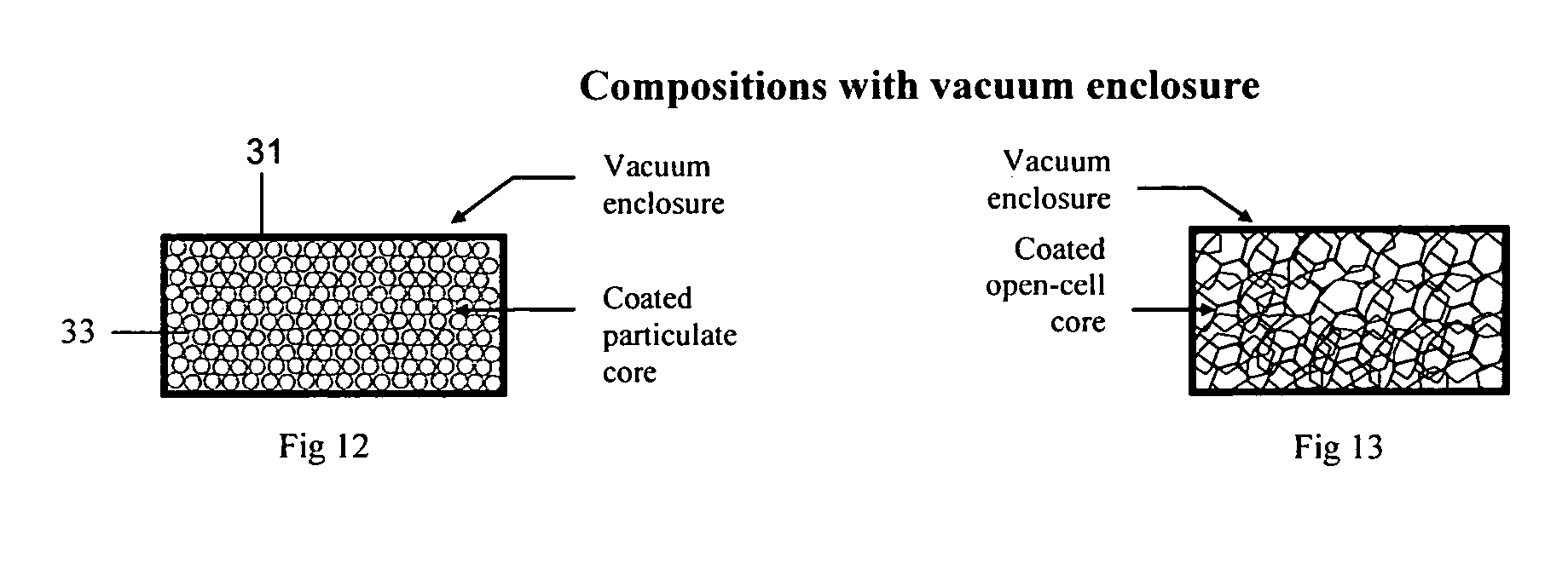Fire resistant insulation material
a technology of insulation materials and fire-resistant materials, applied in the field of insulation materials, can solve the problems of low melting point, inability to resist fire for long, and nearly all polymeric insulation materials have a low decomposition point, so as to improve the mechanical properties of the insulation material, improve the fire resistance, and easy delaminate
- Summary
- Abstract
- Description
- Claims
- Application Information
AI Technical Summary
Benefits of technology
Problems solved by technology
Method used
Image
Examples
Embodiment Construction
[0093] Each of the preferred embodiments of the insulation material illustrated in the figures includes particles of a combustible insulation material that are coated with a fire resistant material.
[0094] The insulation material may be in the form of loose-fill, i.e. free flowing, agglomerates of coated particles and a binder material.
[0095] The insulation material may also be shaped products of the insulation material. The shaped products, of regular or irregular shape, may be formed by way of example from the above-described particles and / or agglomerates.
[0096] (a) FIG. 1 illustrates one embodiment of a product that includes coated particles and binder material that are form on a free-form basis an agglomerate 3 of the coated particles and binder material in the shape shown in the figure. The agglomerate can be cut, shaped, drilled and generally handled like conventional building materials.
[0097] (b) FIGS. 2, 4 and 6 illustrate embodiments in which the coated particles and bin...
PUM
| Property | Measurement | Unit |
|---|---|---|
| Thickness | aaaaa | aaaaa |
| Mechanical properties | aaaaa | aaaaa |
| Particle size | aaaaa | aaaaa |
Abstract
Description
Claims
Application Information
 Login to View More
Login to View More - R&D
- Intellectual Property
- Life Sciences
- Materials
- Tech Scout
- Unparalleled Data Quality
- Higher Quality Content
- 60% Fewer Hallucinations
Browse by: Latest US Patents, China's latest patents, Technical Efficacy Thesaurus, Application Domain, Technology Topic, Popular Technical Reports.
© 2025 PatSnap. All rights reserved.Legal|Privacy policy|Modern Slavery Act Transparency Statement|Sitemap|About US| Contact US: help@patsnap.com



